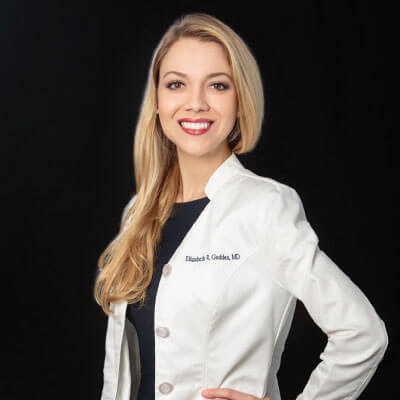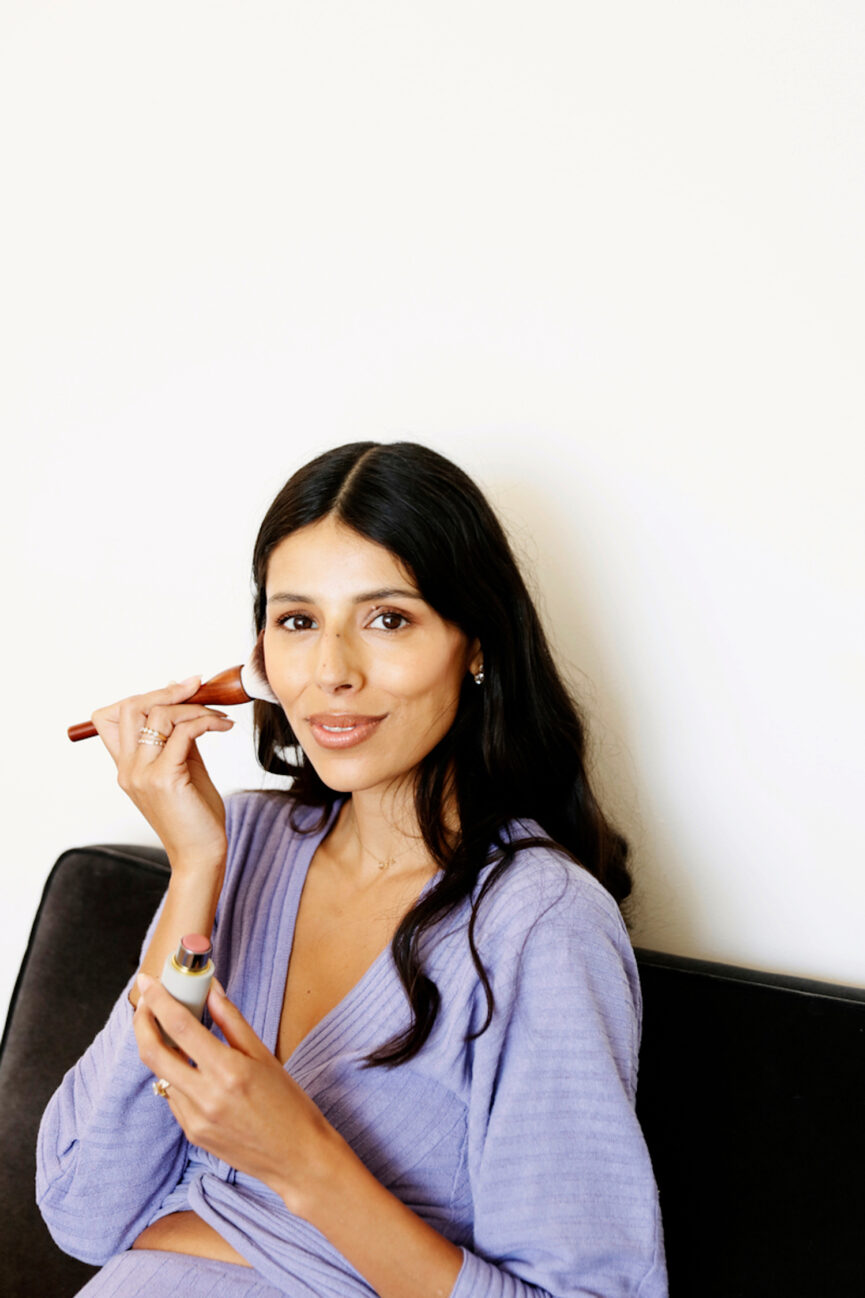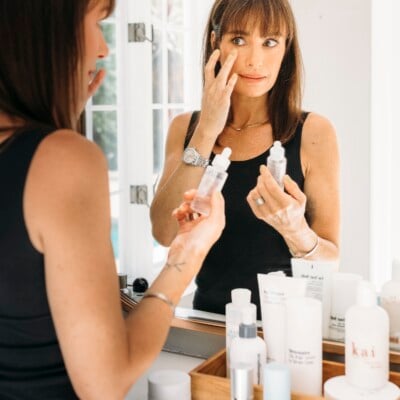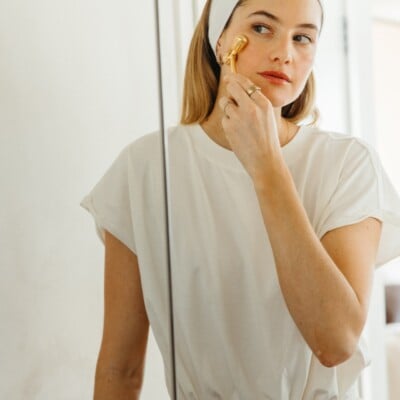All your beauty questions—answered. Our resident dermatologist, Dr. Geddes Bruce breaks down the biggest topics in beauty, from hair loss to Botox and everything in between. Send us a DM @camillestyles with your own burning q’s and we may address it in a future column.
In the past few years, in-office procedures have become more accessible and less intimidating. Gone are the days when cosmetic procedures were whispered about in hushed tones. Today, we’re having open, honest conversations about what makes us feel good, inside and out. For many of us, that includes exploring the ever-evolving landscape of beauty treatments that can help us put our best face (and body) forward. Enter: tweakments.
This social media buzzword is broadly defined as quick, natural-looking procedures that have you in and out of the spa without any downtime. While it might seem like a new phenomenon, non-invasive beauty treatments have always offered a middle ground between embracing a natural look and making tweaks that help us feel like the best version of ourselves—especially during the summer, which we’re dubbing the season of self-care.
Featured image from our interview with Roti Brown by Michelle Nash.


If you’re looking for a pre-vacation glow-up or just want to feel your best this summer, look no further. However, with so many options out there, it can be overwhelming to know where to start. That’s why we’ve done the legwork for you. We’ve consulted our resident dermatologist to bring you the latest on the most popular and effective non-invasive procedures for summer.
Breaking Down the Best Non-Invasive Procedures for Summer
Q: I’m curious about cosmetic procedures, but I don’t know which ones are safe and effective. How do I find the right non-invasive treatment for me?
Non-invasive treatments should complement your daily skincare routine to address skin concerns, supercharge results, and make you feel your best. In the summer, every moment is precious and most of us want to maximize our time outside. With non-invasive treatments, you don’t have to sacrifice your summer for your skincare goals.
To demystify non-invasive procedures for a summer glow-up, we consulted Dr. Elizabeth Geddes-Bruce, who has plenty say on the subject.


“Summertime is a time for travel, outdoor BBQs, pool hangs, and beach waves. People don’t want to spend their summer hiding indoors, recovering. They want to be out and about and enjoying it. Also, there’s more ambient sunlight during summertime, and so the risks of developing hyperpigmentation after aggressive procedures increase,” says Dr. Geddes. “For that reason, we generally save our more intense procedures for the fall or winter and stick to noninvasive treatments in the summer. This is even more important for our patients with melanin-rich skin.”
Ahead, Dr. Geddes takes us through what to know about non-invasive treatments for summer and how to get the most out of your spa visits.

Dr. Geddes is a board-certified dermatologist and dermatologic surgeon at Westlake Dermatology, specializing in the practice of both cosmetic and medical dermatology. She views cosmetic dermatology as synergistic to a happy, healthy lifestyle and regularly counsels her patients in a balanced, natural approach to both cosmetic and medical dermatology.


First of all, what are tweakments?
“Tweakments is a term used on social media to describe a procedure that creates a small, natural change in appearance,” says Dr. Geddes. “It’s akin to saying a tiny adjustment or a little bit of editing. It refers more to the degree of change being not drastic. And that’s often accomplished with noninvasive procedures.”
Non-invasive procedures have been around longer than the term “treatments,” but both refer to small treatments that deliver a “you, but better” look without interfering too much with your routine.
Who might be a good candidate for non-invasive procedures?
If you’re curious if non-invasive treatments might be right for you, good news: they probably are. Take it from Dr. Geddes. “Anyone who is healthy and has an interest in maintaining or improving how they look and feel is a good candidate for a noninvasive procedure or tweakment. It’s all for fun and feeling good!”
Like any other aesthetic decision, the best way to be sure you’re doing the right thing for your aesthetic goals is to ask an expert. Speak to your dermatologist or schedule a consultation before taking the plunge. This will help you be sure you’re suitable for the treatment you want—or help you pick the right one for your goals.
“It’s not for everyone, and that’s OK,” says Dr. Geddes. “The best way to figure it out is to go in for a consultation with an expert, like a board-certified dermatologist with cosmetics training.”


What should we know before getting non-invasive procedures?
When it comes to getting non-invasive procedures for summer, less downtime also means less prep before your appointment. However, for some treatments, there is a little pre- and post-procedure care to be mindful of.
“Most procedures, even noninvasive ones, require a period of strict sun avoidance while healing. Generally, the less intense the treatment, the less downtime/need for sun avoidance.”
You might have to edit your daily skincare routine for a few weeks before your treatment to minimize risks. But other than opting out of AHAs and retinol for a while (which you might be doing anyway to protect your skin in the summer), the beauty of non-invasive treatments is often their universality and how quick you’ll be back to your routine afterward.
Some pre-procedure steps Dr. Geddes recommends:
- Discontinue any potentially irritating topical agents (like retinoid creams) a few days before.
- Tell your provider if you have a history of cold sores.
- Don’t plan on trying any new treatment right before a big life event or trip.These procedures are still medical treatments with real risks and potential complications, even if they are noninvasive.


The Best Non-Invasive Procedures for Summer
From Botox to lasers, you might be seeking tweakments for smoother skin or even muscle tension. Dr. Geddes gave us the scoop on the most popular non-invasive treatments for summer, but she also says the best thing you can do this summer is enjoy it!
“Sometimes the best kind of glow-up comes from the inside. Spend quality time with friends and family. Laugh a lot. Make good memories. Eat fresh food. And get your body moving.”
Dr. Elizabeth Geddes-Bruce
Ahead, Dr. Geddes breaks down the best non-invasive procedures for summer. Read on to discover what options might be right for you.
Biostimulators
These are injectable products that are designed to improve skin quality and volume by stimulating collagen production. They are often delivered in a series of treatments to optimize effects.
- Pros: By gradually stimulating collagen production, they can provide natural-looking and long-lasting results, restore volume, and improve skin texture over time.
- Cons: Results from biostimulators take time to become visible, often requiring multiple sessions and several months before full effects are seen. Some individuals might experience temporary swelling or bruising.
Microneedling
This is a procedure that uses a device with numerous needles to penetrate the skin and stimulate wound healing. It’s quick and relatively painless and has very little downtime, making it a perfect summertime procedure.
I love the glow it gives, and it’s safe for all skin types. It should be avoided in people with active skin infections or moderate acne.
- Pros: Microneedling boosts collagen production, improves skin texture, and reduces the appearance of scars and fine lines. It is minimally invasive with relatively quick recovery times.
- Cons: Post-procedure redness and sensitivity are common, lasting a few days. Results can vary, and multiple sessions may be needed to achieve desired outcomes.
Superficial chemical peels
These are when a very light acid is applied evenly to the skin to cause peeling of the top layers. It can be done to help lighten discoloration, temporarily minimize the appearance of pores, and improve skin texture.
The exact peel used for your skin must be chosen by a skin expert to avoid complications. Stop all retinoids or irritating topical agents for at least five days before any peel. You will need to minimize sun exposure while healing, but this is usually only for a couple of days.
- Pros: Superficial chemical peels gently exfoliate the skin, addressing minor skin imperfections and improving overall skin texture.
- Cons: The effects of superficial chemical peels are often temporary and may require regular treatments to maintain results. Some individuals may experience mild irritation, redness, or flaking post-procedure.
(Some) lasers
Lasers such as the pulsed-dye laser (to target redness) and low powered, low density resurfacing ones (like Clear and Brilliant for dark spots) have minimal downtime and can be done safely in the summertime. These must be performed by an expert to avoid complications.
- Pros: Laser treatments can effectively address a range of skin concerns, including pigmentation, wrinkles, and scars, with relatively quick recovery times. They offer precise and targeted treatment, leading to noticeable improvements.
- Cons: Laser procedures can be costly, and the intensity of the treatment might cause discomfort during and after the procedure. There is also a risk of temporary redness, swelling, and hyperpigmentation, especially in those with darker skin tones.






